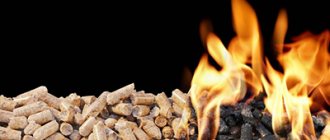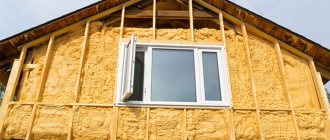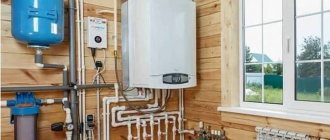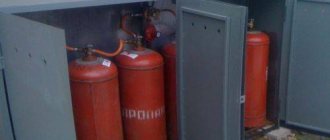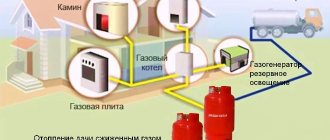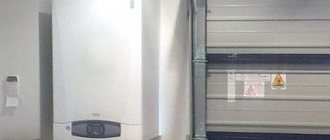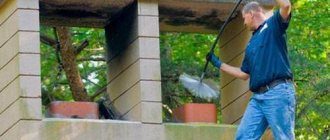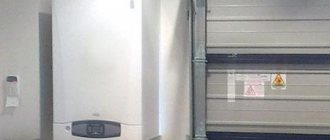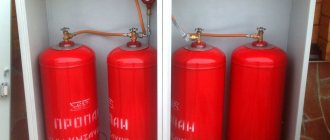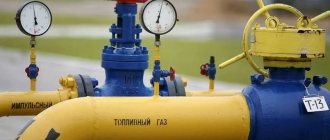Pellet granules - quality and features
In recent years, with rising fuel prices, increasing attention has been paid to the rational use of valuable resources.
Pellets - one of its most promising types - are nothing more than granules compressed from waste raw materials. They are produced using agricultural waste (straw, corn stalks, sunflowers and other crops), as well as wood chips, sawdust and other wood waste. The presence of any chemical components in the composition is completely excluded.
The consumption of pellets per 100 m2 of heated area is determined by calculation or experiment, as in the case of using any other type of fuel.
It is worth noting that pellets, compared to wood and coal, show exceptionally high energy efficiency. The performance characteristics of granules depend on strict adherence to production technology. So, when purchasing them, you should pay attention to the following details:
- The surface of conditioned pellets is shiny and smooth, the presence of cracks and chips is unacceptable.
- Fuel granules must be strong enough and not crumble when vigorously kneaded with your fingers. Otherwise, they will be destroyed by the auger when fed into the firebox into dust.
- The color of the pellets must be uniform. Preference should be given to light-colored granules that contain more wood and less various impurities: bark and small branches. This fuel has better characteristics.
When purchasing this type of solid fuel, you need to take into account the recommendations of the manufacturer of your existing boiler and give preference to hermetically sealed pellets. Packaged pellets are easier to transport and store; they are protected from external influences and dust from settling on them. Granules can be poured directly from the bag into the hopper of a solid fuel boiler.
Operating principle and design of the boiler
- Frame. Sheet steel is used for production. A double casing is installed around the heat exchanger and combustion chamber. Mechanisms and automation are installed in the housing. It is equipped with a circulation pump, smoke extractor and expansion tank. Some models have a small funnel in the body.
- A pellet burner that looks like a cup or tray with holes of a certain size. The burner is equipped with blower fans and heating coils.
- The combustion chamber is welded from stainless steel and is small in size compared to other solid fuel boilers. This is enough for work, since the fuel is supplied in small portions.
Interesting to know: Depending on the heat exchanger material, pellet boilers are divided into cast iron and steel. Cast iron heat exchangers are durable and long lasting.
The heat exchanger is made of cast iron or steel. Here the heat is transferred to the coolant. The fuel hopper is filled with pellets. It is located next to the boiler or in its body
When choosing a boiler, pay attention to the size of the bunker, as this depends on the battery life of the installation. An automatic device for supplying fuel to the boiler in the combustion chamber using screws or pneumatic mechanisms. Heat exchanger cleaning device that greatly simplifies heat exchanger maintenance
A control system that monitors and regulates the operation of the system
A heat exchanger cleaning device that greatly simplifies heat exchanger maintenance. A control system that monitors and regulates the operation of a system.
Depending on the model, the design of the pellet boiler can be easily changed. This applies in particular to systems that can operate on different types of fuel.
Calculation of the daily requirement of pellets for heating a residential building
It is quite easy to determine the amount of fuel needed for a day, month or heating season. You can calculate the approximate consumption of pellets for heating a house of 200 m2, focusing on the following ratio: when burning 1 kg of high-quality pellets, 5 kW of thermal energy is generated. Accordingly, to obtain 1 kW of power, 0.2 kg of fuel will be required.
An algorithm for more accurately calculating the daily need for pellets for heating residential premises is as follows:
- To create a comfortable microclimate, 0.1 kW of thermal energy per hour per 1 m2 is required with a ceiling height of 2.8 to 3.0 m.
- Accordingly, the consumption of granules will be 0.2 kg/kW • 0.1 kW/(h m2) = 0.02 kg/(h m2).
- We multiply this figure by the area of the house (in our case it is 200 m2) and we get: 0.02 kg/(h m2) • 200 m2 = 4.0 kg/h.
- Daily consumption will be 4.0 kg/h • 24 h = 96.0 kg.
To determine heating costs per day, simply multiply the data obtained by the price of a kilogram of pellets. Please note that the calculations did not take into account the costs of delivering fuel, paying for electricity and carrying out routine maintenance. Meanwhile, to ensure the operation of the heating system - the auger motor, electronic controller, as well as the fan and circulation pump - up to 0.5 kW/h is required. These are significant costs and must also be taken into account.
Fuel granules must be strong enough and not crumble when vigorously kneaded with your fingers.
Consumption and calculations of fuel pellets per 100 m²
It is worth considering that wood pellet material is a packaging product, packed in bags of a certain volume. Therefore, it is not difficult to calculate what the pellet consumption will be for 1 kW, 1 m². There is no need to interpret weight into volume, because pellet manufacturers always register goods in kg, and the unit of heat measurement is kW. High-quality fuel material has an exceptional ability to generate heat, so when burning 1 kg of wood pellets, about 5 kW of energy is generated.
Consequently, to obtain 1 kW of heat in a room, you will need to burn about 200 grams of pellets. It will not be difficult to determine the average consumption of granular fuel per 1 m², given that for every 1 m² you need 100 kW of thermal energy, subject to the permissible conditions of a ceiling height of 3 m. 100 W of thermal energy is obtained by burning 20 grams of fuel.
This calculation will be relevant if the efficiency of the pellet boiler system reaches 100%, which is not possible in reality.
The efficiency of heat generators is also indicated by higher rates, but will reach barely 85%. It turns out that when burning 1 kg of pellets in a fuel tank, no more than 4.25 kW will be released (5 × 0.85 = 4.25). You can also calculate the values the other way around. Another point is that heating 1 m² will require 100 W of heat if the ambient temperature is low enough and constant for 5 days. With average data, energy consumption for the entire heating season is almost 2 times less, which means the specific heat transfer per 1 m² is 50 W. The consumption of pellet fuel in a boiler installation for 1 hour is an incorrect calculation, and the final indicator is too small and inconvenient for calculations. It would be ideal to calculate the weight of fuel for 1 day.
Features of pellet heating
The boiler installation for burning wood pellets is considered to be the principle of space heating. Fuel is poured into tanks and supplied to the boiler furnace using automatic screw equipment. The consumption of pellets is calculated based on the heating needs of the room. The higher the need for heat, the more pellets are needed for laying.
When the required temperature is reached, the supply of pellet fuel to the firebox stops, significantly reducing material consumption. The fuel bunker can have different volumes, determining the pellet capacity from a few days to a whole year. The requirements for the heating unit must correspond to the area of the room, the main season of use, and the financial capabilities of the customer. When using pellet equipment, as a rule, an additional boiler is installed.
Quality of pellet granules
The characteristics of fuel pellets determine further heating, its feasibility and functionality. Pressed briquettes for this type of boiler require compliance with storage and movement conditions. When compared with the requirements for liquid and gaseous fuel materials, the situation with pellets is much simpler. It is only important to control the permissible level of humidity in the room.
The quality of pellets can be determined by burning a small number of pellets in the firebox, which will be the determining factor in purchasing a whole batch. The key point here should be quality assurance based on the combustion of experimental samples.
If it is not possible to check the granules in this way, then we offer you alternative methods:
- Visual inspection of granules. The surface of the pellets should be smooth and shiny, without obvious cracks or chips. These indicators confirm compliance with the technological process at the time of manufacturing and pressing, and natural wood was used as a binder.
- Perform a fragility test. High-quality fuel material should not crumble upon palpation, so it is best to use solid granules. Pellets with a violation of the manufacturing process will begin to crumble already at the moment of transfer by auger equipment to the furnace.
- Choose pellets packed in bags. Under such conditions of storage and transportation, fuel will not combine with dust, which negatively affects the operation of the entire heating system.
- You should buy fuel material according to the parameters, sizes and types specified in the passport of the boiler installation itself.
- Study the shade of the granules. Light-colored pellets indicate the use in production of wood materials without bark and unnecessary impurities; they are considered the most effective for heating. Dark-colored granules indicate that the manufacturer used bark and wood waste as raw materials, so their effectiveness will be significantly lower.
Application
Coal is burned to produce heat, which is used for hot water and heating of houses. The mineral is used in metal smelting processes. At thermal power plants, coal is converted into electricity by combustion.
Scientific advances have made it possible to use this valuable substance in a different way. Thus, the chemical industry has successfully mastered a technology that makes it possible to obtain liquid fuel from coal, as well as rare metals such as germanium and gallium. Carbon-graphite composite materials with a high carbon concentration are currently being extracted from this valuable mineral. Methods for producing plastics and high-calorie gaseous fuels from coal have also been developed.
A very low fraction of low-grade coal and its dust after processing are pressed into briquettes. This material is excellent for heating private homes and industrial premises. In general, they produce more than four hundred types of various products after chemical processing to which coal is subjected. The price of all these products is tens of times higher than the cost of the original raw materials.
Over the past few centuries, humanity has been actively using coal as a fuel necessary for obtaining and converting energy. Moreover, the need for this valuable resource has been increasing recently. This is facilitated by the development of the chemical industry, as well as the need for valuable and rare elements obtained from it. In this regard, Russia is currently conducting intensive exploration of new deposits, creating mines and quarries, and building enterprises for processing this valuable raw material.
Additional factors determining pellet consumption
The above calculation method is good only in theory, but in reality, the volume of actual consumption of fuel pellets can differ significantly from these indicators, up or down. In fact, the consumption of pellets for heating a 100 m2 house depends on many factors, of which two are the most important:
- characteristics and efficiency of the solid fuel boiler used,
- operating mode of heating equipment.
Along with the quality of the pellets, these factors have a significant impact on daily consumption and, in general, on the cost of heating. The owner of a private home can significantly reduce these costs by choosing high-tech and economical equipment and skillfully regulating its operation.
Efficiency of a solid fuel boiler
Modern equipment for heating systems has a complex design. A good pellet boiler, whose fuel consumption is relatively low, is equipped with a hopper for loading pellets. They are fed into the firebox by a screw as the previous batch burns out; the process of supplying fuel and air is regulated by an electronic controller according to a given algorithm.
Maximum energy efficiency is demonstrated by pyrolysis boilers, the efficiency of which can reach 80-85% due to pressurization and afterburning of furnace gases. Taking this indicator into account, the estimated amount of pellets consumed increases by 15-20% and amounts to 0.023 from 0.024 kg/(m2 h). Thus, for normal heating of a house during the day, you will need from 55.2 to 57.6 kg of fuel for every 100 m2 of heated area.
Is it possible to heat a stove with pellets: features, important nuances
Lighting a stove using pellets is an innovative type of heating.
Granules are a biofuel that delivers the maximum possible energy while burning almost completely. This new product has many advantages.
How to use granules
Since gas boilers are used for gas heating, and electric boilers are used for electric heating, it is advisable to use a specially prepared unit - a pellet boiler - to heat residential premises using pellets. The reason for this lies in the optimization of equipment for special fuels, which increases the efficiency of its use. Although a traditional wood-burning stove can be used to meet minimum needs.
Such heating devices operating on pellets have a design no less pleasant than models running on gas, diesel or electricity. However, they require the presence of a container for storing new portions of fuel. Usually the full volume is enough to keep the equipment in continuous operation for 24 hours.
Over time, new technologies are being introduced into equipment models. For example, there are devices that require fuel loading once a week or season.
Such equipment is equipped with large fuel tanks.
The key feature affecting fuel consumption is the outside temperature, but the temperature that needs to be maintained indoors is no less important.
Pellet boilers operate according to the following algorithm:
- the auger directs the granules into the oven;
- pellets are ignited using electricity;
- automatic combustion support;
- The layered plate is heated, which subsequently transfers its heat to the room.
Is it possible to use pellets in solid fuel boilers?
The use of pellets for kindling solid fuel equipment or Russian stoves is acceptable. In this case, the unit with a grate needs to change the slots of the cast iron grate to better retain the granules during the combustion process. This is done by replacing the grate or by placing a wire mesh over it in the longitudinal and transverse directions.
The problem with the grate can be solved with the help of an overlay. The most suitable pellets for grate stoves are 8 mm pellets.
Six-millimeter products will sag before they burn, increasing fuel consumption and reducing efficiency.
In this case, the ash content is not particularly important, therefore it is recommended to use industrial granules, which are less expensive.
An important advantage when replacing firewood with pellets is fuel savings. Fuel can be placed in the firebox in any quantity, but combustion control will be difficult, which often leads to boiling, water hammer and failure of the heating system.
In addition, if you use pellets, you can save fuel storage space, since with the same mass, pellets will occupy 60% less room volume than firewood.
Before stocking up on a large amount of fuel, you can try to heat a solid fuel boiler or stove using regular wood filler for pet trays. This substance is also produced in the form of granules. Its cost will be higher than the price of purchasing fuel, but 10 kg of filler is enough for testing.
Types of pellets
Pellets are wood waste from wood processing plants compressed into granules. They are considered an environmentally friendly product - after all, no adhesive admixtures are used for their production, and after crushing and drying in a granulator press they are compressed under strong pressure into granules. Bonding occurs with the help of lignin, which is contained in wood and is released under pressure. Therefore, more and more often the choice of homeowners is to use them.
All the above calculations were based on the indicators that high-quality granules produce. But depending on the starting material used for the production of granules, there are different types. Elite solid granules are made from wood waste that does not contain various impurities that reduce thermal output. Granules that contain impurities are much cheaper than elite ones. But their heat transfer is much lower, and the increased ash content makes working with them labor intensive (the need for mandatory constant cleaning of the boiler).
Don't miss: Bubafonya Oven.
There are even lower cost granules made from agricultural waste. They contain little resinous impurities. But the resulting thermal output decreases from 5 kW from one kg to 4 kW. Which immediately significantly increases the amount of required mass for a month. And this, accordingly, entails an increase in the cost of heating premises in the winter season.
There are many different types of compressed wood waste with varying levels of various impurities. Due to their quality in boilers with retort burners, they cause malfunctions and sometimes equipment breakdowns. These types of granules can be used in boilers with a torch-type burner. But it is always better to weigh the pros and cons when choosing a particular type of compressed wood waste. After all, some “manufacturers” manage to mix sand into the structure of the raw material to add weight, which can only be determined after burning such a product.
Device elements
Through the doors in the front wall of the boiler body, access to the ash pan and burner is provided.
A volumetric pellet burner increases the efficiency of a pellet boiler to the level of a gas boiler. Flanges and pipes for connecting to the chimney and pipeline are located in the rear wall. The control unit is mounted on top, the pellet hopper, cast iron or made of sheet steel, is mounted on the side. It is connected to the burner by a hose and an external screw feeder. The internal auger, if the model is equipped with one, moves the pellets directly to the fire. The insulating material covering the boiler body is protected by a steel casing.
Pellet fuel: what is it?
Pellets are an element of plant origin in the form of dense small “grains” of cylindrical shape. The diameter of the granule does not exceed 1 cm, the average length is 4 cm.
Photo 1. Pellets for use in a heating boiler. They are small compressed granules.
Energy carriers are low-quality wood, bark, wood processing waste, as well as straw, sunflower husks, and corn. Pressing of the feedstock is preceded by:
- its coarse grinding, drying;
- fine grinding to a powdery fraction;
- treatment with water and steam.
Granulation improves the important physical and mechanical properties of the dispersed product, eliminating fluidity, dusting, and caking during combustion. The result is a bulk material represented by elements of a given shape, size, structure, humidity, and density.
Principle of operation
The energy characteristics of the boiler, the design of the furnace, and its operation are determined by the phenomena and processes accompanying fuel combustion. Heated wood breaks down into “volatile” substances and coals. These components, when burned, contribute to the total amount of heat generated.
In the boiler firebox and flues, heat is transferred from the fuel to surfaces by convection and radiation. A fan under the burner directs air into the firebox. It passes through the burning solid fuel, mixes with combustion products and heats the firebox, flues, and tank. The total temperature of the mixture of air and hot gases is 1300–1700 °C.
Reference. By radiant radiation, the furnace wall is warmed only from those areas of the stack that directly “look” at it. Its share is small, but the lower part of the combustion chamber adjacent to the filling is heated mainly by radiation.
The main heating of the firebox and channels is performed by hot gases - combustion products.
The proportion of volatile substances in pellets is higher than in lump wood (not to mention coal and brown coal). Therefore, the convective gas ducts of a pellet boiler are developed, multi-pass (after all, more than 2/3 of the heat removal occurs in them), and the combustion chamber is small.
The medium transmitting the generated energy (water, water antifreeze) circulates through a closed pipeline, heating the air in the room through heating radiators. A separate circuit can supply the building with hot water.
Photo 2. Pellet boiler with a water circuit connected to it, which is used for heating the room.
Pellet boilers are combined with other heating equipment (to supplement their operation in winter and save fuel in summer), for example:
- with heat accumulators - thermally insulated tanks in the heating system circuit that accumulate hot water;
- additional heating circuit, for example, a solar system;
- electric boiler.
Important! Not every design of a heating boiler implies the possibility of heating non-freezing liquid. Not every model is designed to connect more than one circuit
Pros and cons of this type of raw material
Pellets entered the market as a heating product relatively recently, but their popularity is already obvious. And although the prices for equipment that uses them as fuel are not cheap, due to their positive qualities they are becoming more and more popular for heating rooms. Thanks to the variety of their types, you can choose heating equipment according to your needs. If possible, you can choose a boiler with a combustion load for several hours, several days, and even months. In the modern world, more and more attention is paid to the environmental friendliness of the products used. And compressed wood waste becomes an alternative in this case. They are convenient to store; when supplied in bags, they are light and compact in placement. And their quantity is required in smaller quantities than other types of fuel. It is also important that when they burn, the smoke has no odor.
The disadvantage of using them, which cannot be avoided, of course, is the release of ash. And even when using elite brands of wood pellets, it is necessary to clean the boiler at least once every two months. And after the winter season, be sure to completely disassemble and clean the boiler. The storage location is also important. And for better performance of their properties, they should be stored in dry rooms without the possibility of getting damp. Since raw ones can cause the boiler to stop working.
Types (with examples of models)
They are divided according to different parameters.
By fuel type
- Heating equipment using only pellets as fuel. For the successful operation of such a unit, stable and timely supplies of fuel will be required.
Example: pellet boiler Roteks-15
- Conditionally combined. The specially shaped firebox makes it possible to burn, in addition to pellets, other types (briquettes or firewood). Burning alternative fuel in a wood-fired pellet boiler is an emergency function. Constant operation in this mode will lead to failure of the pellet wood boiler.
Model example: Faci 15 pellet boiler
- Pellet combined. They have built-in special combustion chambers designed to use their type of fuel. Although such heating devices are universal, they have a couple of disadvantages: large sizes and a very high price.
Model example: STROPUVA S20P
By type of fuel supply to the boiler
- Automatic. Automation of the process is the main advantage of such boilers. To calculate the required power and configure such an automated pellet boiler, the services of specialists are required.
Example: Termodinamik EKY/S 100
- Semi-automatic. The power is set manually by the regulator, and subsequently the granules are supplied automatically.
Pellet boiler UNITECH Multi 15
- Mechanical loading of granules. Such a unit requires the constant presence of a person to periodically load granules.
STROPUVA MINI S8P
By purpose
- Heating fluid (water). Most often, they are located in basements and have quite serious dimensions; their appearance is purely utilitarian.
Pellet boiler SIME SOLIDA 8
- Convection oven-fireplace for heating the surrounding atmosphere. It is installed in the living room, has compact dimensions and a pleasant design.
Pellet fireplace Termal-10 BASIC
- Hybrid heating schemes. They combine heating using a water coolant with direct heating of the surrounding air at the location. Externally they are very similar to fireplace stoves. Some models are equipped with a cooking surface and, in some cases, an oven.
Heating boiler Kupper OVK 10 with pellet burner APG25
By burner type
- Flare. They are most widespread and are most often used in private homes. Low power burners for small combustion chambers are simple and reliable, and are also quite easy to set up. The downside to them is the unidirectionality of the flare fire, which leads to localized heating of the boiler wall. Very demanding on the quality of granules.
Model example - Lavoro LF 42
- Volumetric combustion. Such burners have greater power and are used in industrial equipment, but they have also found their niche in ordinary boilers. A huge advantage of such burners is their undemanding quality of granules, but their use has led to a significant increase in the weight of the device.
Representative - Radijator COMPACT 20
- Fireplace. In such a boiler, pellets falling into the bowl burn. This is the safest type of burner, and the operation of heating equipment of this type does not create much noise. The downside is the paucity of adjustment settings and demands on the quality of the granules. This is the most economical pellet boiler in the entire line.
Pellet fireplace Termal-6
This is interesting: Finishing the facade of a private house with siding: let’s describe the main thing
Advantages and disadvantages of pellet fuel
As a type of fuel for the home, many people have doubts about pellets - after all, firewood or coal are much more common. Let's try to understand the positive and negative qualities of fuel pellets. Pros of pellets:
- easy to transport;
- environmentally friendly;
- form colorless smoke and do not emit unpleasant odors during combustion;
- are stored for a long time;
- When choosing heating using pellets, you can purchase special equipment with automatic fuel supply, that is, manual labor is almost completely minimized.
Note! When heating a house with pellets, you do not need permits to connect the boiler, unlike the use of liquid fuel.
Disadvantages of pellet fuel:
- high price of heating equipment;
- purchasing, delivering fuel and servicing boilers can cause difficulties if the house is located in a village remote from a big city;
- presence of low quality raw materials on the market.
Important! Pellets can only be stored in a well-ventilated and dry room - if they come into contact with moisture, they can become damp and become covered with fungus.
How to calculate pellet consumption for heating
Along with other types of solid fuel, pressed pellets made from various wastes are becoming increasingly popular for heating private homes. Since the demand for this type of fuel is steadily increasing, the production of pellets is simultaneously expanding and growing. Those who have not yet installed new heating equipment in their homes and are thinking about choosing an energy carrier are keenly interested in what the specific consumption of pellets for heating a house is.
How to calculate pellet consumption?
Considering the fact that fuel is supplied in bulk or packaged in bags, it is, in principle, not difficult to calculate the consumption of pellets per 1 kW or per 1 m2. There is no need to convert weight units into volume, since delivery always occurs in kilograms, and the heat of combustion of fuel is also measured in kW per 1 kg of weight.
Good quality granules have excellent calorific value; burning 1 kg of such fuel produces almost 5 kW of thermal energy. Accordingly, to get 1 kW of heat for heating a house, you need to burn about 200 grams of pellets. The average consumption of granules per unit area can be easily determined based on the fact that heating each 1 m2 of area requires 100 W of energy. One condition is important: the ceiling height should be within 2.8-3 m. 100 W of heat will be obtained from 20 grams of granules, it would seem simple arithmetic.
But it was not there. The figures presented above are correct if the pellet boiler has absolute efficiency - 100% efficiency, but this does not happen in real life. In fact, the efficiency of such heat generators, although higher than that of solid fuel boilers, is still only 85%. This means that after burning 1 kg of pellets in the furnace of the unit, not 5 kW of energy will be obtained, but 5 x 0.85 = 4.25 kW. Conversely, to release 1 kW of heat in pellet boilers, 1 / 4.25 = 0.235 kg or 235 grams of fuel is consumed. This is the first point.
The second nuance is that 100 W of heat per 1 m2 of room is required when the ambient temperature is the lowest, which lasts for 5 days. On average, during the heating season, thermal energy consumption is half as much. This means that the specific heat transfer per unit area is only 50 W. Determining the consumption of pellets in a pellet boiler for 1 hour relative to 1 m2 will be incorrect; the figure will be small and inconvenient. It would be more correct to calculate the weight of pellets burned per day.
Since Watt is a unit of power per 1 hour, then per day for each square of the room you will need 50 W x 24 hours = 1200 W or 1.2 kW . For this purpose, you will need to burn the following mass of pellets per day:
1.2 kW / 4.25 kW/kg = 0.28 kg or 280 grams.
Knowing the specific fuel consumption, we can finally obtain values useful for financial calculations, for example, the average seasonal weight of pellets used per day and per month in a house with an area of 100 m2:
It turns out that 8.4 kg of fuel is needed per month to heat 1 m2 of a building. At the same time, according to user reviews on various forums, heating a well-insulated house of 100 m2, located in the middle zone, takes about 550 kg of pellets, which in terms of square footage is 5.5 kg/m2. This means that the consumption of pellets in the boiler in the amount of 840 kg per month for a building of 100 m2 is very large and suitable for calculations of poorly insulated houses.
Let us summarize some results in the form of calculation results for dwellings of various sizes. The following are the monthly costs of pellets for heating a private home:
- 100 m2 – 840 kg with poor insulation, 550 kg for good thermal insulation;
- 150 m2 – 1260 kg and 825 kg, respectively;
- 200 m2 - 1680 kg and 1100 kg under the same conditions.
Don't miss: Heat-saving film for windows - is its use justified?
For reference . In many boiler installations, the controller has a function that allows you to see on the display the consumption of pellets in kilograms over a certain period.
Medium quality pellets
In the above calculations, the indicator of calorific value inherent in high-quality white granules, the so-called elite, was used. They are made from good wood waste and have virtually no foreign inclusions, such as tree bark. Meanwhile, various impurities increase the ash content of the fuel and reduce its calorific value, but the price per ton of such wood pellets is significantly less than elite ones. By reducing the cost, many homeowners are trying to make their pellet heating more economical.
In addition to elite fuel pellets, cheaper pellets are produced from agricultural waste (usually straw), whose color is somewhat darker. Their ash content is low, but their calorific value is reduced to 4 kW/kg, which will ultimately affect the quantity consumed. In this case, the consumption per day for a house of 100 m2 will be 35 kg, and per month - as much as 1050 kg. The exception is pellets made from rapeseed straw; their combustion heat is no worse than that of birch or pine pellets.
There are other granules that are produced from a variety of waste from wood processing enterprises. They contain all sorts of impurities, including bark, which cause malfunctions and even malfunctions in modern pellet boilers. Naturally, unstable operation of equipment always causes increased fuel consumption. Heat generators with retort burners in the form of a bowl facing upwards are especially often capricious from low-quality pellets. There, an auger supplies fuel to the lower part of the “bowl”, and there are holes around it for air to pass through. Soot gets into them, causing the combustion intensity to decrease.
To avoid such situations and reduce the efficiency of the boiler, it is advisable to choose fuel with low ash content and in no case wet. Otherwise, problems will begin with the screw feed because the wet granules crumble and turn into dust, clogging the mechanism. You can use cheaper fuel to heat your house with pellets when the boiler is equipped with a torch-type burner. Then the ash covers the walls of the firebox and falls down without getting back into the burner. The only condition is that the combustion chamber and burner elements will have to be serviced and cleaned more often as they become dirty.
Formula for calculation
- M = X/heat capacity of pellets, where M is the consumption of pellets in kg.
- X = S*D*24*0.7*70 , where X is heat loss during the heating season.
The calculation is based on the following initial data:
- room area (m2), S - specified by the user;
- duration of the heating season (days), D - specified by the user;
- boiler operating time - 24 hours;
- boiler operating factor - 0.7;
- average heat loss for a residential building is 70 W/m2 per hour;
- 8.5 rubles - average cost for 1 kg of pellets;
- pellet heat capacity - 5 kW/kg;
The heat capacity of a specific fuel and the thermal conductivity of a building are often mistakenly not taken into account. This leads to errors. The calculated boiler power may be higher than the actual one. As a result, you will freeze in winter.
You need to enter the initial data: the area of the house and the number of cold days per year. The average duration of the heating season in our country is 120-180 days. You take it yourself, depending on your region of residence.
Conclusion
When calculating the cost of pellets for heating, you should add some additional costs to it. This includes delivery and payment for electricity used by the functional elements of the heat generator. These are auger and fan motors, electric ignition and a controller. As a result, the electrical power of all these units can reach 500 W, which is significant when calculating costs.
The cheaper way to heat your home
The price of fuel for heating a private home is of great importance, but it is pointless to consider it in isolation from heat transfer. We will calculate the cost of heating taking into account both parameters.
Combustion of peat fuel 3 hours after laying
In the area where our expert lives, the following prices are asked for proven types of fuel:
- Freshly cut firewood – 20 USD. e. for 1 m³. Let's tie the price to the weight: 20 dollars for 600 kg or 33 cu. e. for 1 ton.
- Briquettes made from pressed sunflower husks – $57 per ton.
- Peat briquette – 84 USD. e./1 t.
It is easy to calculate that 10 kg of wood will cost 33 cents, the rest of the fuel - 57 and 84 cents, respectively. Then 1 hour of heating on wooden logs costs 33 / 1.5 = 22 cents (remember, the wood burned out in an hour and a half).
In a similar way, we determine the hourly rate for burning briquettes:
- pressed husk: 57 / 2.17 (2 hours 10 minutes) = 26 cents;
- briquetted peat: 84 / 3 = 28 cents.
Burning briquetted sunflower seed husks. Interesting result, right? In our case, heating up an absolutely cold building costs 5.28 USD. e. per day for wood, 6.24 dollars for pressed husks and 6.72 cu. e. - on peat “bricks”.
Please note that we took the cost of raw wood (and it will decay sooner) and divided it by the time of full combustion of dry wood. That is, the difference between traditional fuel and briquettes is minimized. We suggest watching the progress of the experiment on video and listening to an expert’s opinion on this matter:
How many pellets do you need for heating?
Heating costs using pellet fuel are calculated according to a universal scheme. To do this, you need to know how much heat is needed to heat the area of the house and the amount of energy released during the combustion of 1 kg of raw materials. Let's look at examples of calculations for houses with different square footages.
Wood pellets: consumption per 100 m²
When using high-quality raw materials, the heat transfer will be 5 kW per kilogram. And to heat 1 sq. meter of a house with a ceiling height of up to 3 meters, you will need about 100 W/hour. It turns out that to heat a room with an area of 100 m², about 2 kg of pellets (10 kW: 5 kW) will be consumed per hour. For a day you will need 48 kg, and for a month - 1.4 tons.
The heating season lasts on average 150 days (or 5 months). This means that the consumption of pellets for heating a 100 m² house during the cold season will be about 7 tons. But given that in autumn and spring there are quite warm and sunny days, when you can save on heating the room, this figure can easily be reduced to 4.5-5 tons.
Important! This calculation algorithm will be effective only for premises insulated in accordance with the recommendations of SNiP.
Consumption of pellets for heating a house 150m2
In a not very severe winter, 50W is needed to heat 1m2 per hour. For the whole day this is 1200 W.
The amount of pellets burned to produce heat of 1 m2 per day will be 1200 W/4.25 kW/kg = 280 g.
Accordingly, it is easy to calculate the consumption of pellets for heating a house of 150 m2:
- per day: 0.28kg*150m2=42kg.
- per month: 42kg*30days=1260kg.
But these figures also turn out to be overestimated if the house is well insulated. Many homeowners with a well-insulated home spend much less kg. On average, the amount needed is reduced by 35%. Then the cost of heating a 150 sq. m house with pellets is also reduced by this amount. Similarly, the amount of raw materials required per month is reduced to 825 kg.
Pellet consumption in a house of 200 m²
Taking into account the above algorithms, the consumption of pellets for heating a house of 200 m² will be:
- for severe winter - about 96 kg/day or 2.9 tons per month;
- for a relatively mild climate - 48 kg/day or 1.46 tons per month.
Consumption of various types of fuel
As you can see, the consumption is quite optimistic, so it is not surprising that when designing a heating system for large premises, pellet boilers are increasingly in demand.
Important! High-quality home insulation and replacing windows with fiberglass bags helps reduce costs by up to 35%, even in low temperatures.
Ease of use
Storage
Solid fuel must be stored in a designated area under certain conditions:
Pellets - put in plastic bags to protect from moisture; store in a dry place if the granules have high porosity.
Firewood - protected from rain and snow; ventilate so that dampness does not accumulate; make a base of boards to prevent mold from appearing.
Coal - store under a canopy at 20°C and below so that it does not oxidize; Protect with covering material to prevent self-ignition.
The gas tank is filled a couple of times a year, then the gas itself runs through the pipes. The reservoir is buried underground and does not take up space on the site.
Loading fuel
Firewood and coal need to be loaded constantly. Therefore, these works are often performed by the stokers of our time - guests of the capital.
Fuel pellets do not require constant loading, the normal mode is once a week. But still, the pellets themselves do not yet jump into the boiler. There is an automated boiler - “carborobot”. You can take a closer look at it.
The gas tank is refilled once every six months, most often in the fall. Each stage is strictly regulated, you only need to open the gate. The gas carrier will travel along any road, the tank will be filled in 1-2 hours. You can also save on gas stations.
Note: TT is a solid fuel.
Waste and cleaning
Combustion with coal and wood means smoke, cinders, soot, soot, tar, ash, ash. That is, equipment cleaning operations once every 2 weeks.
Wood ash dumps can be used as fertilizer in the garden; coal ash can be used to fill holes in the primer. Or call a recycler - this will add a regular expense item.
Experts inspect the gas tank twice a year: in spring and autumn. If necessary, cosmetic repairs are carried out.
Gas tank technical inspections
After installation, you enter into a contract for 1 year of free service. The service includes 2 preventative engineer visits in the fall and spring and 1 emergency call within 24 hours.
Then the agreement can be renewed for 12,000 rubles per year. Or use the one-time inspection service for 3,500 rubles. An unscheduled emergency departure costs 5,000 rubles.
Heating with wood:
- does not imply a high price.
- the boiler is very practical and durable, and also does not require the help of specialists in operation.
- the boiler must be located in a specially equipped boiler room, which must have a separate exit to the street.
- Firewood is prepared in advance and needs to be stored properly.
- The quality of firewood is quite difficult to control.
- warmth in the house requires several loadings of firewood into the boiler throughout the day. You can minimize your labor by installing a long-burning boiler.
Heating with pellets:
- the price of the boiler is an order of magnitude higher, but at the same time it is more comfortable to use, does not require frequent adding of fuel to the boiler, the adding is done automatically;
- boiler maintenance costs are much higher;
- storing pellets requires less space, and they are also less moisture resistant;
- it is easier to control the volume and quality of granules;
- This type of heating is, if not more expensive than heating wood, then at least comparable to it, but the heating process itself is much more convenient, a huge plus for a pellet boiler is that it does not need to constantly add fuel.
Sources
- https://www.teplodar.ru/help/articles/detail/raskhod-pellet/
- https://PechnoeDelo.com/toplivo/rashod-pellet.html
- https://toplivniy-briket.ru/raskhod-pellet-na-otoplenie-doma/
- https://teploguru.ru/sistemy/rasxod-pellet.html
- https://lucheeotoplenie.ru/tipy-otopleniya/pelletnoe/rashod-pellet-na-otoplenie-doma-200m2.html
- https://pechnoy.guru/otopitelnoe-oborudovanie/kotly/tverdotoplivnye/pelletnyj-kotel/rashod-pelletnogo-kotla.html
- https://superarch.ru/texnika/rasxod-pellet-na-otoplenie-doma-100m2
[collapse]
How to heat a stove with pellets: methods and rules of use
Many owners of private houses want to heat their stoves with pellets, which are a composite fuel with high thermal capacity. They have many advantages over conventional firewood, which explains their high popularity.
Despite the fairly simple structure of fuel pellets, many citizens have a question about how to properly heat a simple brick stove with pellets and whether this process can be carried out at all.
Is it possible to burn a regular stove with pellets?
It was previously mentioned that pellets are extremely active in everyday life, but a special stove and burner system is required to ensure a normal flame and a uniform heat transfer process.
Despite a number of limitations, pellets can be burned without much difficulty in a conventional stove, however, the advantages of fuel in this format of use are often lost.
The main positive features of the material are:
- Long burning life;
- Low emission of smoke and toxic substances;
- High amount of thermal energy;
- Burnout uniformity.
If you plan to burn pellets in a standard stove without significantly upgrading it, then they will simply burn like regular firewood. Due to their high cost, this format of use becomes unprofitable.
Most often, minor modifications are required according to proven schemes. All of them differ from each other in their complexity, cost of implementation and the need for additional equipment. Despite all the difficulties, already in the first hours after the upgrade you will be able to forget about the difficulties that haunted you earlier.
Manually firing the stove with pellets
One of the simplest and cheapest formats for using such pellets involves manually adding fuel to the stove. For many people, this process seems unnecessarily complicated and incomprehensible, since the first time it is not possible to calculate the exact amount of fuel and the time of its addition.
After just a few times, you will be able to understand the features of the process and will easily control the flame power and the “operating” combustion temperature.
You can heat a stove with pellets in a conventional stove without significant modifications:
- The easiest way is to install a specialized basket in the oven. It has a fine-mesh structure, which prevents burnt pellets from falling into the ash pit. The cost of such products is extremely affordable, so every stove owner can afford it.
- If you want to do the work yourself without purchasing additional products, you should manually reduce the gaps between the grates. To do this, you need to re-weld the grate with a decrease in clearance or install a special mesh, which is made of thickened wire.
Despite the wide range of options, using a special basket is the most optimal choice, which has been tested by thousands of people. Be sure that you will certainly appreciate the ease of use!
Using a pellet burner for a stove
Pellet burners are a universal device that fully automates the fuel supply process and maintains a given temperature.
Today on the market you can find a large number of models that have proven themselves successfully. They can operate both using electrical energy and compressed gas. The first option is safer, since the energy supply can be instantly limited in case of an emergency.
Example of a pellet burner
An important feature of such burners is the automated fuel supply mechanism, which does not require outside intervention. All that needs to be done is to enter the settings, check their correctness, if necessary, change them to the required values, and then just monitor the availability of fuel.
Modern pellet burners have several main parts, including:
- Transport fuel supply mechanism;
- Ignition and fire control systems;
- Microprocessor for automated control of the combustion process;
- The actual body.
The cost of such products is quite high, but the comfort they provide is worth the money spent!
Design and principle of operation
In a brick oven
installing a burner in a brick oven is quite simple:
- The burner body itself is inserted into the furnace, and then carefully secured with screws and other materials.
- Usually there is no gap between the furnace mouth and the burner wall, however, if there is a large diameter hole, it is recommended to seal it with specialized sealants.
- If the burner is electrically powered, the power cable must be protected from high temperatures. it is usually vented away from the furnace and direct flame exposure, so no additional design modification is required.
- The last step is to secure the pellet storage chamber on top of the burner. the case has a special mechanism, so you only need to install it in the appropriate grooves.
installation examples in the photo:
photo 1
photo 2
installing a pellet burner on a metal stove is practically no different from the brick version. the only thing you should pay attention to is to prevent contact of the burner body with the walls of the furnace, since high temperatures can lead to failure of the mechanism.
installation example
pellet burner installed in a potbelly stove with a hopper
pellet loading technique
heating a simple brick stove with pellets is quite simple. If the burner has an electric ignition mechanism, then you just need to press a special button. Cheaper models do not have this functionality, so a gas burner is used.
The combustion rules are quite simple - fuel should be supplied evenly and fairly slowly. if a large amount of ash is formed, then the feed rate should be reduced, since the pellets simply do not have time to burn, but melt under the influence of high temperature.
safety precautions
The burner mechanism itself ensures all safety norms and standards, which significantly reduces the likelihood of an unplanned fire. You should carefully monitor the rate of supply of pellets, since if the firebox is overfilled, pellets may fall out and surrounding objects may ignite.
Conclusion
Absolutely anyone can heat a stove with pellets, therefore, if you make the appropriate decision, you can not only save on fuel, but also warm up your home faster during the cold season. Remember that the cost of upgrading the stove will pay off in the shortest possible time, and the pleasure you will get from using it will not be comparable to anything else!
Source: https://pechnoy.guru/pechi/topka-pechi/kak-topit-pech-pelletami.html
